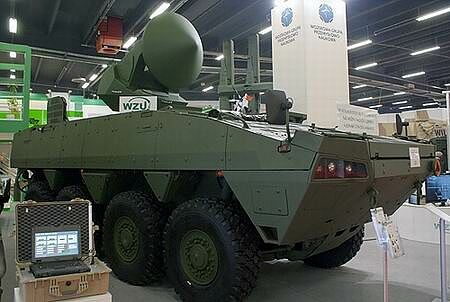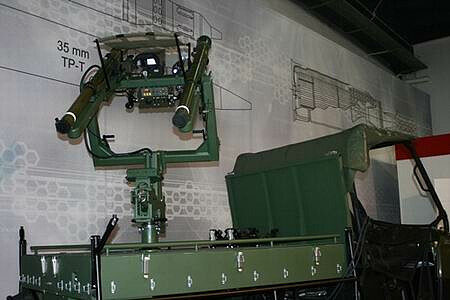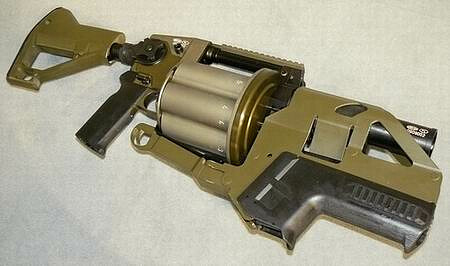News

What’s new at the MSPO?

The new W-3PL/N helicopter construction will drive upon the multi-task machine for battle field support W-3PL Głuszec (The Capercaillie). The Swidnik contractors are thus able to make use of the solution which have proven to be reliable, efficient and meet the requirements of maritime type of missions. Swidnik factory presents a considerable experience in maritime helicopter production; Polish Navy has successfully used the W-3RM and W-3WARM Anakonda machines. However the tasks assigned to these ones have been limited only to the maritime search and rescue activities. For about 10 years the discussions have been held about the new product to replace the Anakonda; this helicopter is supposed to be of universal nature which encompasses not only the SAR type of actions but also antisubmarine defence as well as neutralisation of other waterborne targets. The possibility of developing a ship-based capabilities have also been discussed.

The Crossbow System is targeted at combating the air-attack devices such as jet-planes, helicopters or BSL’s. owing to the fact that the system is completely passive there is no radio-locator and the observation system can only be used to find the target and to direct the missile precisely. Once the missile has been guided, its warhead operates in the aim, shoot and forget mode. The system utilises the standard GROM missiles; alongside the on-ground feed-in systems they are mounted the launcher which is equipped with autonomous launch systems and opto-electronic observation devices. The optoelectronics can be power-fed from batteries or a silent power generator. The carrier which is now on offer is the all-road & off-road Polaris Ranger 6x6. The vehicle has completed the tests at the Military University of Technology. If the need arises the system can be in-built onto any other platform including larger size vehicles, ships or mounted in the tri-pod stationary version.

WZU presents a considerable experience in overhaul, refurbishment and modernisation of air defence systems purchased in former USSR, such as Szyłka, Osa or Kub, as well as in system modernisation and integration to match the NATO-standards of information exchange (including the Link-11, Link-16) and the missiles produced in western countries. The works have already prepared their offer for Egipt. The system demonstrative vehicle has already been on display at previous MSPO trade fairs. The basic construction element is the rocket missile Wróbel (The Sparrow); i.e. the RIM-162 Evolved Sea Sparrow Missile (ESSM), which is a distant relative of the AIM-7P. the latter one has been used on ships in addition to combat vehicles. There are certain advantages to the semi-active guided missiles (the one that requires the laser beamer ground illumination); the price is much lower and the missile control level is much higher.
This year’s MSPO edition is also the showcase for the products of the Gamet Company from Płock; one of Poland’s largest producers of warning lamps.
The company’s products are primarily targeted at the peace-keeping forces such as police, the Military Police as well as ambulance services. Gamet has been present in domestic and foreign markets, Germany and France in particular. Gamet showcases a diversified product range at the MSPO; there are mainly directional lamps and warning light systems in addition to generators and loudspeakers. And among the products on display there are the cutting edge technology LED light exemplified by warning beacons of the SLO3 LED LL24 series. These light make use of the light-eminent diodes; the 24 diodes of 1 W each are fed with 12 or 14 V power supply; the power consumption of the systems is exceptionally low. The Gamet offer encompasses also the directional lamps of Makroled series. These used to be mounted on the police wagons Mercedes Sprinter (the 4 and 8 LED set variations). Low power consumption is characteristic for these lamps; it is about 4 and 8 Watts respectively (they are dedicated for vehicle eclectic installation of 12 or 24 V). The set is based upon multi-lamp synchronisation system Multi-Master TM. The producer highlights yet another product – the 2 LED series light beam which is powered by its own electric source LED 3W. 120 appliances of this kind have been ordered by the Police to be mounted on the Alfa Romeo 159 cars. The Gamet representatives admit that there are many more LED based products in the pipeline; however there will still be the traditional lamps on offer; such as the SLO3 O which utilise a regular 55W/12V light bulb or the 70W/24V bulbs owing to the fact that there is a constant and high market demand for this kind of products.

The composition of this surprising set is the response to the problems of grenadiers in short-distance self defence. A soldier who has been equipped with a hand grenade launcher has no other personal weapon on, despite the hand-gun. A self-loading pistol suspended in the front of the grenade launcher expands the soldier’s self-defence capabilities when the enemy is within the 30-metre radius. The aiming accuracy is enhanced when the set is rested upon the shooter’s arm. The Glock 17 pistol has been located in an extensive module which is suspended under the grenade launcher’s barrel. It is composed of an internal suspension sling the hand gun goes into; the saddle equipped with pieces of universal railings placed on its sides and a trigger covering pad. The solution described above makes it possible shoot the pistol via the grenade launcher’s gripper. All it takes is to move your finger down and rest it on the trigger coupled with the Glock’s pull rod.
Locating device to discover living beings behind barriers – put on display at the Military Electronic Works’ stand. As for now it is just a technology demonstrator which is the fruit of cooperation wit the Military University of Technology WAT.
The application is the part of the research and development project number O R00 0062 11; this is a scientific project. The locating device which is capable of discovering living creatures hidden behind a barrier such as a wall, utilises the noise radar technology. The project has been financed from the science project budget for the years 2010 – 2012; the authors are the scientists of the Military University of Technology and the specialists from the Military Electronic Works. The work scope encompassed construction and tests of the cutting edge demonstrator which is designed to discover living beings hidden behind barriers even if they are invisible for light and infra red detectors.
